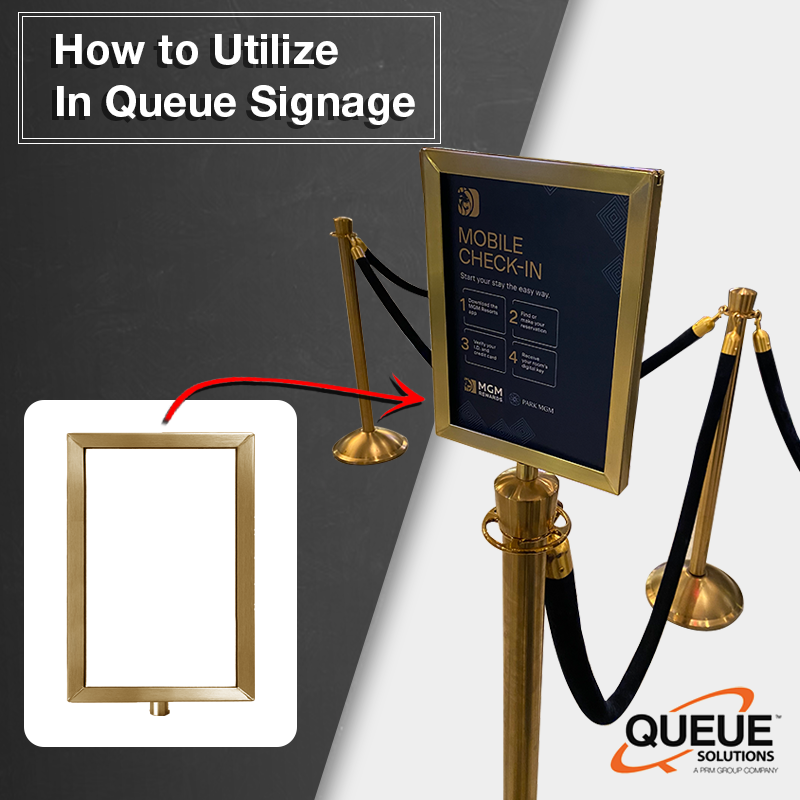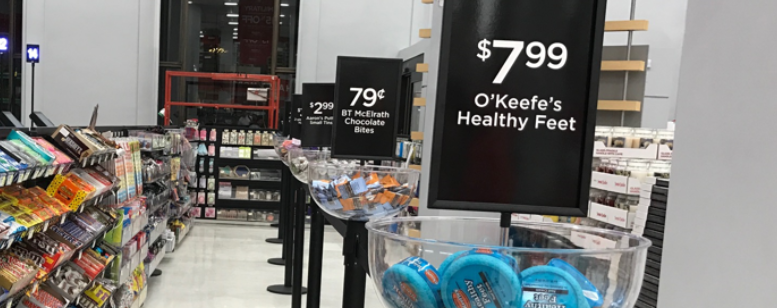
Table of Contents
How to Use In-Queue Signage Effectively
In today’s competitive business landscape, customer experience is paramount. And one often-overlooked element of a positive customer experience is the effective use of in-queue signage. When utilized correctly, in-queue signage can reduce perceived wait times, provide valuable information, and even boost sales. In this post, we’ll delve into the art of using in-queue signage effectively and how it can enhance your customers’ journey.
Section 1: Understand Your Audience
To effectively use in-queue signage, it’s crucial to understand your audience. Different customers have different needs and preferences. Gathering information about your target audience is the first step towards creating signage that resonates with them. Consider employing methods such as surveys, feedback forms, and data analysis to gain insights into your customers’ behaviors and expectations.
Section 2: Set Clear Objectives
Before you start designing your in-queue signage, define clear objectives. What do you want to achieve with your signage? Is it to reduce wait time anxiety, promote specific products, or provide essential information? Setting specific goals will guide your signage strategy and ensure that every sign serves a purpose.
Section 3: Choose the Right Signage
In-queue signage comes in various forms, from bracket signs to acrylic signs and poster frames. Each type has its unique advantages and best-use scenarios. Consider your objectives and queue layout when selecting the most suitable signage. For example, bracket signs are great for conveying simple messages related to customer guidance.
Section 4: Design Effective Signage
Design plays a crucial role in the effectiveness of your signage. Keep these design tips in mind:
-Use clear and concise language.
-Opt for high-contrast colors for readability.
-Incorporate eye-catching visuals.
-Maintain brand consistency in your signage to reinforce your identity.
-Remember, your signage should be visually appealing and easy to understand.
If you are having trouble deciding exactly what design of signage would be best for you then look no further than our custom acrylic signs. We have a set of stock messages and colors that can help you with your queue.
Section 5: Placement Matters
Where you place your in-queue signage is just as important as its design. Strategic placement can significantly impact its effectiveness. Consider positioning signs at key points in the queue, such as the entrance, turns, and near points of interest. Ensure that signs are visible and not obstructed by other objects.

Section 6: Keep Information Relevant
Relevance is key. Your signage should provide timely and pertinent information. Update and rotate signage content to keep it fresh and engaging. For instance, if you’re promoting daily specials in a restaurant queue, ensure that the information remains current.
Section 7: Monitor and Adapt
Effective signage is not a set-it-and-forget-it strategy. Continuously monitor and evaluate the impact of your in-queue signage. Collect feedback from customers and be willing to make adjustments based on their responses. Adaptation is the key to improving the customer experience continually.
Examples
Let’s take a look at some examples of businesses and how they have harnessed the power of in-queue signage:
Case Study 1: XYZ Supermart
XYZ Supermart reduced customer frustration by strategically placing signage offering in-store shopping tips at various points in their queue. This included directional signage along with signage displaying special offers and prices. Shoppers appreciated the helpful tips, resulting in increased customer satisfaction scores.
Case Study 2: Café Aroma
Café Aroma used a set of informational signage within their queue. They decided to rotate their in-queue signage to highlight daily coffee specials. This simple strategy not only boosted coffee sales but also created a sense of anticipation among customers waiting in line.
Conclusion
In-queue signage isn’t just about conveying information; it’s about enhancing the overall customer experience. By understanding your audience, setting clear objectives, choosing the right signage, and designing it effectively, you can create signage that guides and informs your customers seamlessly. Remember, effective in-queue signage is an ongoing process of monitoring, adapting, and continuously improving. When done right, it can turn waiting time into a valuable and enjoyable part of your customers’ journey.



